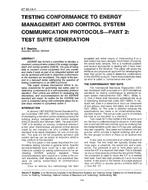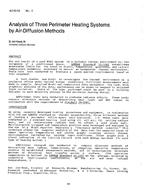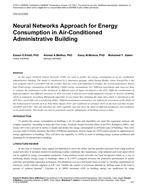Click here to purchase
With global efforts in reducing energy consumption, house manufacturers are seeking use of new materials and design solutions. However, some believe this will increase the risk of mould. One way to assess the mould risk is to use a hygrothermal software for simulating the climate envelopes’ moisture performance. But as with all simulation, the quality of the output can never be better than the quality of the input. In moisture design, some parameters are only based on engineering judgement, which increases the uncertainty. The purpose of this paper is therefore to examine the risks and uncertainties of moisture safety design using hygrothermal simulations. The parametric study is done by using a factorial design and a mould risk assessment tool, Mould – Resistance Design (MRD), to identify what parameters are most influential in affecting the mould risk. The study includes common mould risks, as rain leakage and small air gaps, but also typical ways in which timber house manufacturers try to improve the moisture resistance. Some of the results were quite expected, e.g. the mould risk increases with water leakage closer to the timber frame. But the methodology also showed that changing the façade insulation to a PIR- insulation increases the mould risk more than the risk is decreased by the increased thermal insulation. The study also proves a point in that a lot of theincluded factors are just assumptions based on estimates while the real values are unknown, and they still are the most influential. Other parameters thathad significant importance are often neglected in moisture design, for instance the coefficient regarding wind driven rain and the temperature of the cladding.This paper further acknowledges that there are many and big obstacles in performing a good moisture safety assessment.
Citation: Thermal Buildings XIV 2019
Product Details
- Published:
- 2019
- Number of Pages:
- 10
- Units of Measure:
- Dual
- File Size:
- 1 file , 1 MB
- Product Code(s):
- D-Bldgs19-072


